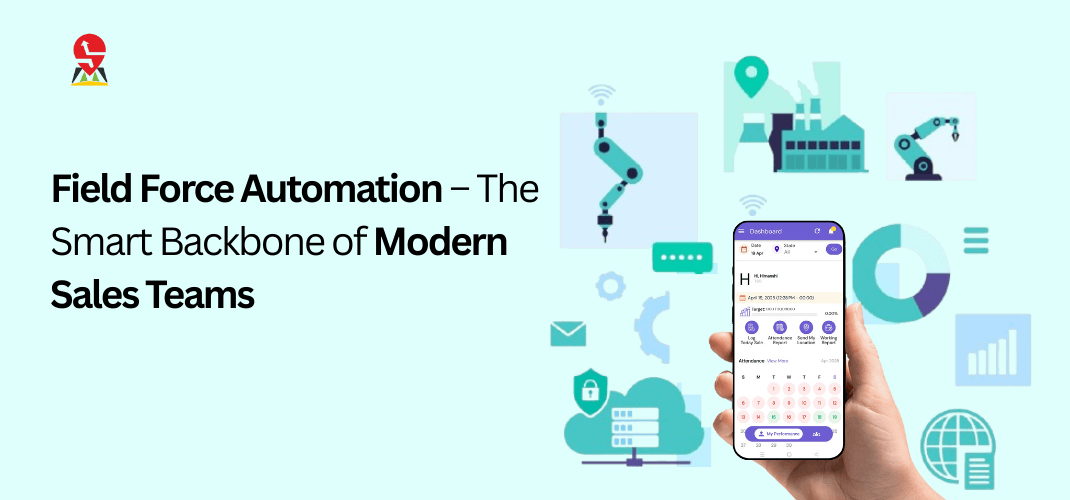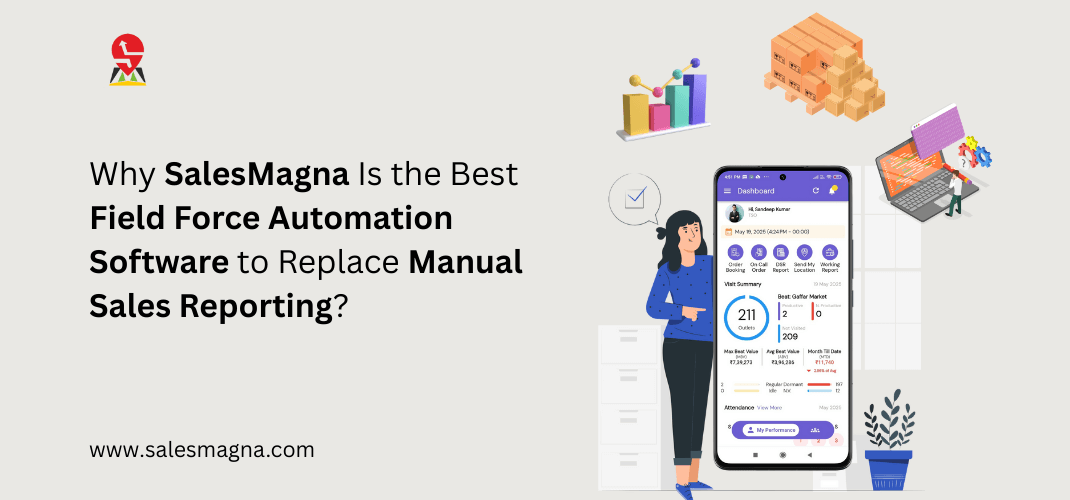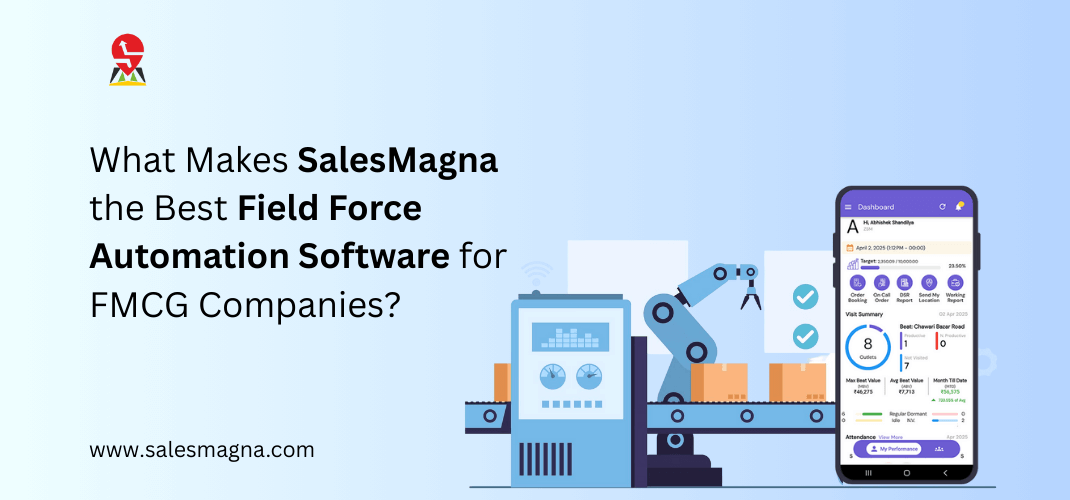In the evolving landscape of sales and service, where on-ground execution can make or break business outcomes, managing a mobile workforce efficiently has become non-negotiable. With the rise of digitization, traditional manual systems are giving way to intelligent solutions that provide real-time visibility, enhance productivity, and streamline operations. This is where Field Force Automation (FFA) steps in as a game-changer.
In this comprehensive guide, we delve into everything you need to know about Field Force Automation – from its fundamentals to its future. Whether you are a sales leader, a business owner, or an operations manager, this guide will help you understand how FFA can revolutionize the way your field teams work.
What is Field Force Automation?
Field Force Automation refers to the use of mobile technology, cloud computing, and data analytics to automate and optimize the tasks performed by employees working outside the office, such as sales representatives, service technicians, delivery personnel, and merchandisers.
Instead of relying on paper logs, manual reporting, or phone calls to coordinate activities, field force automation enables real-time tracking, instant data capture, and streamlined communication between the field and the back office.
With the right FFA solution, businesses can:
- Monitor field staff locations in real-time
- Track attendance with geo-fencing
- Schedule and assign tasks efficiently
- Collect accurate data directly from the field
- Automate order taking and inventory updates
- Generate insightful reports and analytics instantly
Why Traditional Field Operations Are No Longer Sustainable
Manual field operations are often plagued with inefficiencies:
- Lack of visibility: Managers have little to no idea where their field teams are or what they are doing.
- Inconsistent reporting: Paper-based reports are often delayed or inaccurate.
- Time theft and buddy punching: Attendance fraud is common when systems aren’t automated.
- Limited accountability: Without clear data, performance evaluation becomes subjective.
In an era where agility and data-driven decisions are critical, continuing with traditional methods can lead to lost opportunities, poor customer service, and reduced profitability.
Key Components of Field Force Automation
A robust FFA system typically includes:
- Real-Time Location Tracking: Keep tabs on your field force using GPS. Know where your employees are, which routes they take, how long they stay at each location, and whether they’re following the planned schedule.
- Geo-Fenced Attendance Management: Say goodbye to fraudulent check-ins. With geo-fencing, employees can mark attendance only when they are physically present at the assigned location.
- Task & Schedule Management: Assign daily tasks or visit plans from the backend. Field reps receive them on their mobile apps with all necessary details, making coordination smooth and efficient.
- Order & Inventory Management: Field sales reps can place orders directly from customer locations. The system can be linked with inventory for real-time updates and reordering alerts.
- Data Collection Tools: Capture visit notes, photos, customer signatures, and form entries instantly. All data is synced to the cloud for immediate access and analysis.
- Real-Time Communication: Enable quick updates through in-app messaging or notifications to ensure seamless collaboration between field teams and managers.
- Performance Analytics: Dashboards and reports provide real-time performance insights, helping managers make informed decisions and optimize field operations.
Benefits of Field Force Automation
- Improved Productivity: By automating repetitive tasks and reducing admin work, FFA allows field reps to focus on core activities like selling or servicing.
- Enhanced Accountability: With GPS and time-stamped logs, employees are more accountable for their schedules, locations, and outcomes.
- Accurate Real-Time Data: Data captured from the field is instantly available for analysis, eliminating delays and errors.
- Faster Decision-Making: With up-to-the-minute data, managers can quickly identify bottlenecks, reassign resources, or resolve issues in real time.
- Better Customer Experience: Quick responses, timely deliveries, and informed reps lead to higher customer satisfaction.
- Reduced Operational Costs: By optimizing routes, reducing fuel consumption, and minimizing paperwork, businesses save time and money.
Challenges Before Implementing FFA
Implementing an automation system comes with its own challenges:
- Resistance to change: Employees may initially be reluctant to adapt to new technology.
- Connectivity issues: In remote areas, internet availability can be limited.
- Training and onboarding: Proper training is essential to ensure smooth adoption.
- Integration with existing systems: It should seamlessly connect with CRMs, ERPs, and accounting systems.
The good news? Platforms like SalesMagna are designed to overcome these hurdles through intuitive UI, offline functionality, and custom integrations.
How SalesMagna Powers Field Force Automation
SalesMagna is a cloud-based field force automation platform crafted specifically for businesses that rely on mobile teams. With its AI-powered tools and smart dashboards, it empowers companies to stay connected with their field teams in real time.
Key Features of SalesMagna:
- Location Tracking & Geo-Fenced Attendance: Know where your team is and ensure they mark attendance only at the right location.
- Beat Planning & Target Management: Set up daily visit plans and track goal achievements with ease.
- Order Collection & AI Suggestions: Take orders on the go and let AI suggest frequently ordered products.
- Offline Functionality: Sync data automatically when connectivity is restored.
- Smart Notifications: Stay informed with instant alerts on task completions, check-ins, and deviations.
- Live Dashboards: Visualize performance and make decisions on the fly.
Real-World Impact: A SalesMagna Case Study
A mid-sized FMCG company deployed SalesMagna to streamline their 80-person field sales team. Within just three months:
- Sales increased by 30%
- Manual reporting errors dropped by 90%
- Daily productivity improved by 35%
- Customer satisfaction scores went up by 25%
Managers reported greater peace of mind due to increased visibility and reliable data.
Choosing the Right FFA Platform: What to Look For
When selecting a field force automation tool, make sure it offers:
- Mobile-first interface
- Real-time tracking and reporting
- Offline support
- Easy integration with existing tools
- Scalability
- Customization options
- Strong support and training
SalesMagna delivers on all these fronts, making it a trusted choice for businesses across industries.
The Future of Field Force Automation
The next frontier in FFA will be powered by AI, IoT, and predictive analytics. We foresee:
- Predictive visit planning based on customer behaviour
- Voice-based reporting for hands-free data entry
- Automated alerts for anomalies or underperformance
- Gamification to improve team motivation and performance
The evolution of field automation is just beginning—and forward-thinking companies will ride the wave.
Conclusion
Field Force Automation is not just a tech upgrade – it’s a strategic necessity. It empowers field teams, provides transparency, and helps businesses scale operations with confidence.
With SalesMagna, you’re not just managing your field force – you’re optimizing it for success. Whether you run an FMCG company, a service-based business, or a distribution network, our platform is built to make your mobile workforce smarter, faster, and more effective.
Ready to Automate Your Field Operations?
Get in touch with our team or Book a Free Demo today to see how SalesMagna can transform your business from the ground up.


